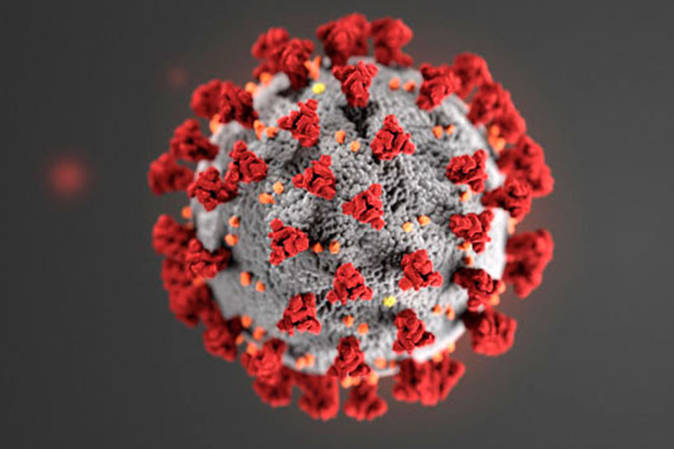A senior medical officer for the U.S. Department of Homeland Security will be touring Alaska over the next week to determine what federal resources may be needed in the state’s ongoing response to the COVID-19 pandemic.
Dr. Alexander Eastman, who is the senior medical officer for operations for DHS, said during a press conference Monday that he, along with Alaska’s Chief Medical Officer Dr. Anne Zink, would be visiting rural communities around Nome and Bristol Bay over the course of the week.
“The orders are simple,” Eastman said. “To deliver the absolute best of what the federal government has, the full array of resources, to provide the necessary technical assistance on the ground in those locations, and then to deliver real-world ground truth back to the folks in Washington who need to have that information to make high-quality decisions.”
Eastman said that the start of the commercial fishing season in Alaska, including Bristol Bay, is something that DHS is monitoring when it comes to additional resources that the state may need.
When it comes to the potential for additional law enforcement presence beyond wildlife troopers in commercial fishing hot spots like Dillingham, Eastman said that his understanding is that Alaska agencies already have a handle on law enforcement in those communities, but that DHS would be responsive to a request for resources of that kind.
Gov. Mike Dunleavy said that Eastman would be visiting communities including Nome, Teller, Brevig Mission, Cordova, Kodiak, Dillingham and others throughout his stay in Alaska this week. Dunleavy also took a moment during the press conference to say a few words about the passing of Nome Mayor Richard Beneville, who died Monday morning after a battle with pneumonia.
“He’s a fixture in the state of Alaska and he was a fixture in Nome for many years,” Dunleavy said of Mayor Beneville. “He was beloved by many, and was just a good guy. If you didn’t get to know him, you might have seen him here at the beginning of the Iditarod. … I would say that the mayor was quite a character in the most positive sense. Our thoughts go out to his family and to the citizens of Nome.”
The issue of wearing masks was also discussed during Monday’s press conference. Dunleavy said that he wears a mask or a bandana whenever he has to be around people because it reduces the transmission of particles from whoever is wearing the mask to whomever is around them, but when he’s out recreating by himself he does not. Eastman added that wearing a mask or face covering in public is an act of common courtesy.
“Wearing a mask in public right now is essentially like covering your mouth when you sneeze under normal conditions,” Eastman said. “If you don’t cover your mouth, everybody would look at you like you were rude and uncouth.”
Zink added that children under 2 should not wear masks, as they have smaller airways than older kids or adults and are at higher risk of suffocating while wearing a mask.
Zink spoke on Monday about another potential issue beyond COVID-19 that she has seen as an unexpected byproduct of the pandemic. People are going to the doctor less often these days, Zink said, but she gave a reminder that preventative care, like child wellness exams and immunizations, are still important during this time and can still be addressed either telephonically or in-person in the case of immunizations..
Zink said that there has been a significant decrease — about 50% — in the number of childhood immunizations given in April of 2020 when compared to the same month last year.
“Those childhood immunizations are really, really important,” Zink said. “We don’t want to have a big outbreak of another disease after all of this, and so make sure those regular health maintenance things are being taken care of. Call your primary care provider and your pediatrician and make those appointments.”
COVID-19 in Alaska: by the numbers
As of Monday there have been 381 confirmed cases of COVID-19 in Alaska. The two new cases, announced during Monday’s press conference, are from Anchorage and Fairbanks. Of the new cases, one is male and one is female.
One is between the ages of 10 and 19 and one is between the ages of 30-39.
No new hospitalizations or deaths were reported on Monday, but four additional people have recovered, bringing that total to 328. There have been 10 deaths and 38 cumulative hospitalizations since the state began tracking the outbreak of the disease.
When it comes to testing, 28,680 tests have been conducted in the state, including over 3,000 this weekend, according to Dunleavy. Zink said that Alaska’s current positivity rate for tests is 1.13%. Zink also said that over 95% of people who test positive for the disease are contacted by Public Health nurses within two hours of receiving the positive results, which leads to more effective contact tracing and isolation for each case.
On the Kenai Peninsula, there have been 24 total confirmed cases of COVID-19. Two are from Anchor Point, four are from Homer, six are from Kenai, three are from Seward, six are from Soldotna and three are from Sterling.
Both of the Anchor Point residents who contracted the disease have since died: One was a man in his 30s who died outside of Alaska, and the other is a man in his 80s with underlying health conditions who died after contracting the disease.

